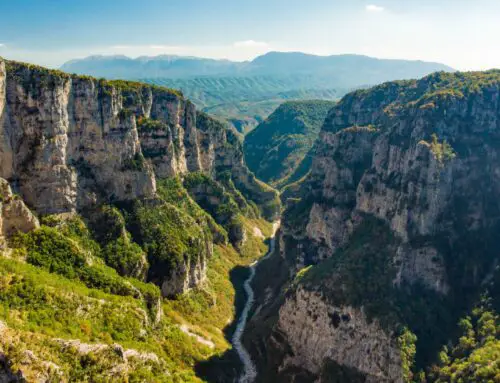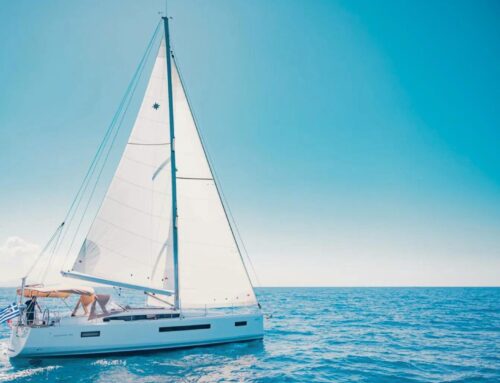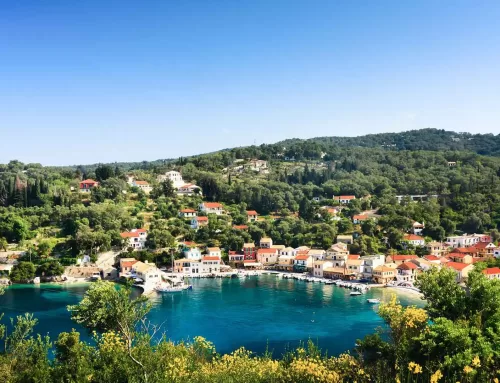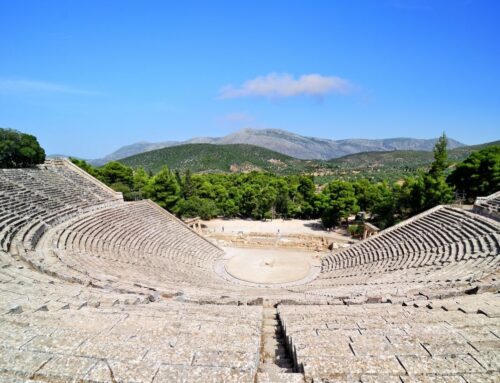
The Real Reason Behind Greece’s White Houses
The Real Reason Behind Greece’s White Houses

☞ Table of Contents:
The whitewashed buildings of the Cyclades have become instantly recognisable as Greek. But do you know why Greece has white houses? These beautiful islands with their iconic buildings have become a tourist attraction that brings thousands of travellers to Greece every year. They adorn postcards, screensavers, vision boards and are the sets to many big movies and yet some people don’t know how this trend began! Read on to find out the real backstory behind the white and blue.
☞ Related: What is the Ideal Greek Island For You According To Your Type Of Vacation

Travelling by ferry?
Embark on a delightful water adventure by booking your ferry tickets effortlessly using the form below.
Greece’s Houses Are White To Protect From The Summer Heat
Greece is hot. This is part of the reason people come here for a summer holiday. They can experience the Mediterranean sun and sea, get some colour and leave feeling refreshed. But when temperatures soar to the high 30’s in June, July and August you will be thankful for your air conditioning.
Pre air conditioning, the people of Greece had an innovative solution. We know that light colours absorb less heat than darker colours, so painting their houses white made the hot Greek summers more bearable. A clever solution!
☞ Related: The Best Of Greece – The Perfect Greek Island Hopping Itinerary
Greece’s White Houses Worked As A Disinfectant
The second reason Greece has white houses was due to a cholera outbreak that occurred under the dictatorship of Ioannis Metaxas and in 1938 painting ones house white was enforced! This was because the white paint contained limestone which doubled as a disinfectant, helping to curb the spread of infection.
☞ Related: The Most Underrated Greek Islands In The Country
The Blue Was Cost Effective
We have explained why Greece has white houses, but what about the blue? To some, it might seem ironic that such a vibrant and eye-catching colour combination was merely the result of practicality and cost restraints!
‘Loulaki blue’ is sometimes used to refer to the unique and vibrant shade that adorns the Greek houses. This is because that’s how the colour originated. Loulaki was a powdered cleaning agent that was found in most households. When it was mixed in with paint it created the blue you see today. Because it was cheap and easily accessible many people used it to paint their homes!
☞ Related: 5 Islands Close To Athens For A Quick Getaway
A Law Was Passed Enforcing These Colours
Yet another dictatorship contributed to the iconic colouration of the Greek houses. In 1967, only a week before elections, Greece was overtaken by a military junta. In an attempt to inspire patriotism a law was passed and enforced that required houses on the Greek islands to be painted white and blue, the same as the colours on the Greek flag.
☞ Related: 10 Places To See in Mainland Greece Before Leaving For The Islands

Where can you see the white house of Greece?
Santorini
This is where the magic of white and blue really comes to life. Santorini is the posterchild for the Cyclades and the perfect place to come and admire what the islands have become so well known for. From sunsets spots to romantic dates and exploring winding alleys you will be surrounded by these houses everywhere you turn. Although this famous island is a favourite there are a lot of other islands around that have the same kind of architecture, not to mention fewer crowds.
☞ Related: 20 Mind-Blowingly Interesting Facts About Santorini
Astypalaia
Because of its geographical position, Astypalaia is a quiet haven for those looking to go further afield, yet still enjoy Greece’s white houses and winding alleys like those of Santorini. To take your experience to the next level we highly recommend you take a day trip to the small islands of Koutsomitis and Kounoupes. After a short boat ride, you will find yourself in paradise. These two uninhabited islands with their white sand, turquoise waters and an untouched environment mesmerize every visitor. If you a quiet Greek island, then this is your answer!
☞ Related: 4 Small Greek Islands That Will Leave A Big Impression
Anafiotika
Greece’s white houses are not limited to just the islands! Nestled under the Acropolis is an island oasis in the heart of the city of Athens. The district of Anafiotika has an interesting back story. The whitewashed buildings with splashings of colour, shuttered windows and cobbled alleys might remind you of something. If you are thinking it’s reminiscent of the Greek islands then you are right!
Many of the early settlers that set themselves up here in the 1800s came from the island of Anafi. “Anafiotika” literally means little Anafi and the carpenters and builders who came to this district built houses that were replicas of their own back home.
☞ Related: 4 Small Greek Islands That Will Leave A Big Impression
If you need help planning your trip to Greece reach out by email or simply click the link below to schedule a free consultation.
*Disclaimer: This page might include affiliate links. If you decide to book something through one of them, I might get a little bonus, but it won't cost you anything extra.*





























